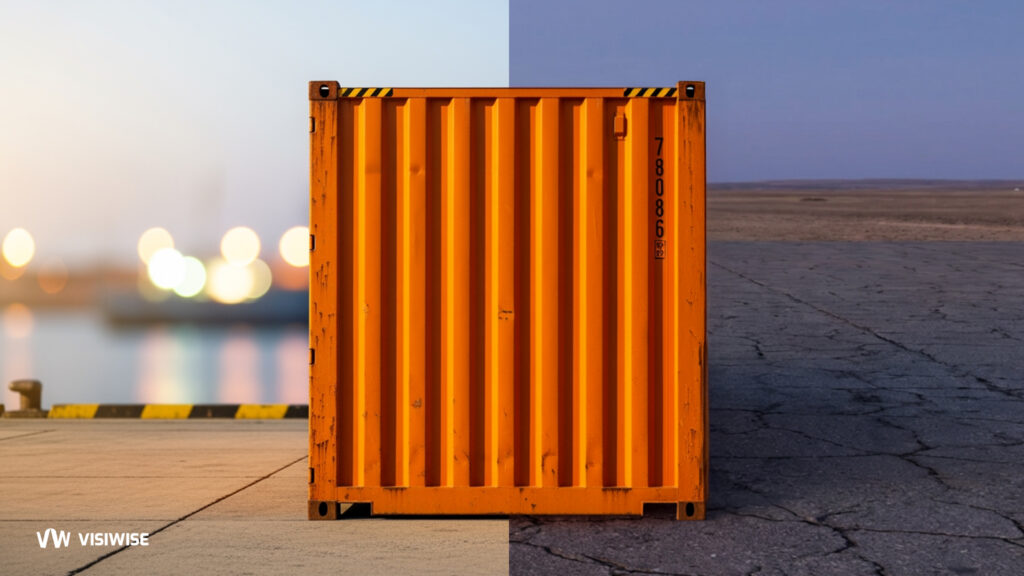When deciding on shipping, time is likely a major consideration. Standard shipping often becomes the go-to choice because it offers a reliable and affordable way to handle deliveries that aren’t urgent. In this guide, we’ll break down how long standard shipping takes across Canada’s main carriers
What Is Standard Shipping?
Standard shipping is the default shipping option in online retail. It is the slowest and least expensive (or free) shipping option at checkout. It is also commonly known as ground shipping, after the basic shipping services offered by the major carriers.
Why Standard Shipping Matters for Ecommerce
Reliable Delivery Your Customers Can Count On
Standard shipping services will rarely equate to an expedited shipping method for eCommerce brands, as this would be too expensive to offer as the baseline option. The main purpose of standard shipping options is to give customers reassurance by offering a reliable timeframe for both international and domestic deliveries and managing delivery expectations accordingly. Ideally, standard shipping options should fall into that sweet spot where delivery times are not rapid, but delivery windows don’t leave the customer waiting for more than a few business days for their order.
Building Your Shipping Framework
The key benefit of standard shipping services is that they provide a solid linchpin to plan the rest of your shipping strategy around. Given that the vast majority of online orders are shipped using your standard delivery method, this makes it easier for you to plan your order fulfillment strategy and inventory management system to meet the shipping cut-off time this method requires.
Standard shipping also makes it easier to see where your business needs to augment its shipping services to offer customers more flexibility. For example, if you’ve elected for _ to be your standard delivery option, which takes business days or fewer, this gives you a good foundation to add some expedited shipping services to cater to customers who require more urgent mail services.
Keeping Free Shipping Practical
If you want to offer free shipping to customers, offering free standard shipping when shipping domestically enables your business to meet customer expectations while preventing shipping costs from spiraling. You can also choose to only offer free standard shipping to shoppers who meet a certain value threshold or hold a certain loyalty status with your brand. This provides a solid incentive for customers to purchase more and become repeat business.
Most Common Domestic Shipping Routes in Canada
When it comes to standard shipping in Canada, most packages start or end in the country’s biggest cities. More people live there, and there’s more business activity, so naturally, more parcels move in and out.
Canada Post actually offers a tool called the Destination Shipping Profile Report. It lets businesses check shipping patterns for standard delivery—pick the origin and destination cities, the type of service, and the time period, and you get a detailed picture of how parcels flow across the country. It’s a handy way to plan and optimize shipping.
Here is a quick reference (Used by FedEx, Canada Post, UPS, and DHL)
| Route | Typical Transit Time (Standard Ground) |
| Toronto → Vancouver | 4–7 business days |
| Toronto → Montreal | 2–3 business days |
| Vancouver → Calgary | 1–3 business days |
| Montreal → Halifax | 3–5 business days |
| Toronto → Winnipeg | 3–5 business days |
| Calgary → Edmonton | 1–2 business days |
| Toronto → Ottawa | 1–2 business days |
Key Points to Compare
When comparing shipping carriers, these are the main dimensions that matter:
| Factor | Why It Matters |
| Speed / transit times | How fast your package gets delivered |
| Reliability / consistency | How likely it is to meet estimates, avoid delays |
| Cost / pricing structure | Base rates, surcharges, dimensional weight, etc. |
| Coverage / network / last‑mile reach | Whether they can deliver to remote or rural areas |
| Customs & cross‑border handling | For international shipments |
| Customer service, tracking, claims | Support, visibility, ease of resolution |
Major Carriers Offering Ground Shipping Services
The first thing you need to consider is which major carrier(s) you want to associate your business with for delivering packages via ground shipping.
Here are the major carriers that offer ground shipping services:
Canada Post
Canada Post offers several ground shipping services:
- Regular Parcel
Ground shipping time ranges from 2 business days for local deliveries to 9 business days for national shipments from a major urban center. - XpressPost
Offers next-day delivery for most local and regional addresses from major urban centers, and 2-day delivery for national shipments. - Priority
Priority is the fastest shipping option of Canada Post, with guaranteed next-business-day delivery between major urban centers.
UPS Ground Shipping
- UPS Ground Shipping time takes 1 to 5 days, with shipping costs depending on packaging and dimensions. Extra-large shipping boxes will cost more.
- Offers Saturday delivery for UPS Ground shipments, enabling weekend delivery to customers.
FedEx Ground Shipping
- FedEx ground shipping time is 1 to 5 business days, with services available from Monday to Friday.
- The carrier ships packages weighing up to 150 pounds, 108” in length, and 165” in length plus girth.
- FedEx Ground offers competitive shipping rates, which helps eCommerce businesses provide cheaper shipping fees to customers.
Comparison by Carrier
Here’s how each carrier stacks up in Canada (and for international shipments involving Canada).
FedEx
Strengths / pros:
- Strong in express and time‑definite international services (priority, first)
- Within Canada, offers ground and express options; “FedEx Ground (Intra‑Canada)” is a cost‑efficient option with 1–7 business day delivery depending on distance.
- For domestic “2–3 day” service, they offer that option as well.
- For international standard shipments to Canada, they advertise 2 to 7 business days.
Weaknesses / tradeoffs:
- Express services are expensive.
- In very remote or northern areas, delivery can be slow or route‑dependent.
- For some services, pickup or surcharges may apply.
Canada Post
Strengths / pros:
- Good coverage across all of Canada, including rural / remote locations.
- More affordable for many domestic, smaller or lighter packages.
- Multiple domestic service tiers:
- Regular Parcel: 2–9 business days depending on distance
- Xpresspost: 1–2 business days between major centres, up to ~7 in remote regions
- Priority: next-business-day delivery in major urban centres; up to ~7 days in remote zones
- Lots of drop‑off locations (post offices etc.), which may reduce pickup complications.
Weaknesses / tradeoffs:
- For international shipments, Canada Post may hand off to other carriers for final leg, which can introduce complexity.
- Because it’s a national postal service, sometimes subject to labor disruptions (strikes, etc.).
- Slower in many cases vs premium express carriers for cross-border or time-sensitive shipments.
DHL
Strengths / pros:
- Very strong in international express shipments — many places see 1–3 business day delivery.
- Predictable transit times, good for cross-border / global logistics.
- Often favorable for express shipments compared to standard carriers on international routes.
Weaknesses / tradeoffs:
- Within Canada domestic services may not always match the coverage or pricing flexibility of Canada Post or FedEx ground for non‑express shipments.
- Cost premium for express service.
- In some cases, hand-offs and customs may introduce delays, depending on origin/destination.
UPS
Strengths / pros:
- Very robust logistics network, good reliability.
- Strong express and ground options for domestic and international shipments.
- Good tracking, claim handling, and infrastructure.
Weaknesses / tradeoffs:
- Generally more expensive than postal services for small domestic shipments.
- For cross-border shipments, UPS tends to be costlier (especially for small or low-value items) because of handling and customs brokerage fees.
- In some comparisons, UPS and DHL have similar coverage and speed, making cost and service tiers the deciding factor.
Side-by-Side: Typical Times & When You’d Choose Each
Here is a rough “when to use which” based on destination and urgency:
| Scenario | Best Candidate(s) | Typical Time / Notes |
| Fastest possible international delivery | DHL Express, FedEx Priority / First | 1 to 3 business days (for many major destinations) |
| Reliable cross-border but not ultra-express | FedEx International Ground / UPS Standard / DHL Economy | 2 to 7 business days range (varies by distance) |
| Domestic Canadian shipments (non-urgent) | Canada Post (Regular Parcel), FedEx Ground | 2 to up to 10+ business days in some cases (for remote areas) |
| Domestic faster option | Canada Post Xpresspost / Priority, FedEx “2–3 day” services | 1 to ~3 business days (depending on distance) |
| Remote / rural areas | Canada Post (because of coverage), or carriers with good last‑mile reach | May require extra days beyond standard estimates |
| Cost-sensitive small shipments | Canada Post, FedEx ground (if available) | Postal services often win for light, low-priority parcels |
Limitations, Caveats & Tips
- All estimates are business days (no weekends) unless a service supports weekend delivery.
- Surcharges, dimensional weight, remote zones, customs delays (for international) can significantly alter actual delivery time or cost.
- Express services tend to include customs clearance in their rates; postal/ground may outsource or delay.
- If the origin or destination is remote (northern Canada, small towns), any carrier will likely take longer.
- Labor disruptions, weather, and customs can introduce unpredictable delays (especially for Canada Post).
- Always check the carrier’s published transit tables or use their rate/estimator tools for the specific origin & destination to get the most accurate estimate.
How much is the average standard shipping cost in Canada?
| Carrier | Starting Rate (CAD) | Delivery Time | Tracking | Ideal For |
| Canada Post – Regular Parcel | ~$9.67 | 2–9 business days | Included | Light to medium-weight parcels within Canada |
| UPS Ground | ~$29.72 | 1–5 business days | Included | Heavier or urgent shipments requiring reliable service |
| FedEx Ground | ~$22.29 | 1–5 business days | Included | Medium to large-sized parcels with timely delivery |
| DHL Ground / Express | Varies; generally ~$25–30 | 1–3 business days (Express), slower for standard | Included | International or time-sensitive shipments |
Final Thoughts
Standard shipping is a cost-effective delivery method, ideal for non-urgent shipments. It primarily uses ground transport and is favored for its balance between affordability and reliability.



